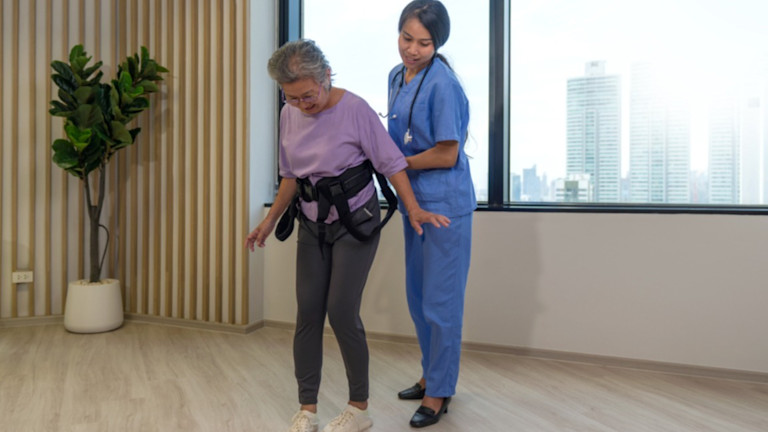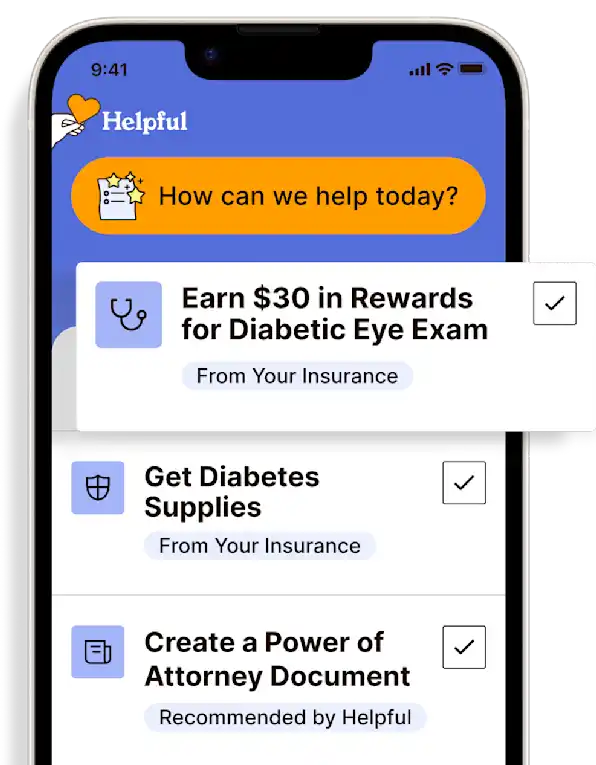Gait Belts for Home Safety and Independence
Simple- to deluxe-style belts for safely assisting with sit-to-stand transitions and support while transferring and walking.
Get insurance benefits, legal documents, and medical records in one place

Helpful Highlights
Gait belts are also known as transfer belts. They are widely available and used in all care settings from hospital to home.
Gait belts are made from canvas, nylon, or leather and are available up to 60 inches long, supporting up to 500 lb.
Gait belts are simple, yet effective, and have been proven to reduce physical strain and falls.
Lifting, transferring, and walking your loved one is possibly the most physically and mentally demanding task for both of you. Each of you feels the strain and safety risks, and you wish there were ways to make these processes easier. Back strain and falls occur most frequently for caregivers and their loved ones during transfers. There are many devices designed to assist with transfers that decrease stress and increase safety without adding a lot of extra time to the process. A gait belt is a simple and effective tool that supports both you and your loved one.
For loved ones who have difficulty with transferring and/or supporting their own body weight for prolonged periods due to generalized weakness, pain, arthritis, or unsteadiness, they may rely on you to assist them with activities such as toileting, bathing, or even getting out of bed. Especially if you are the only one assisting your loved one, you both run the risk of injury.
Gait Belts help you safely transfer your loved one and assist them while pivoting or walking to prevent falls. They are particularly useful for moving from sitting to standing or vice versa, whether in the home or a vehicle. They also provide standby assistance for those who may be experiencing weakness or imbalance while walking. Gait belts help protect both you and your loved one from potential injury associated with physical strain or falling. They are simple, inexpensive, and effective devices that come in many sizes and materials, including some with handles (deluxe) and even ones with pelvic or hip support (sling). Slings are typically more expensive but sometimes better to meet needs.
SAFETY: A gait belt should always be applied over clothing and never against bare skin. It should also be applied to the natural waistline and not up around the rib cage or down around the hips (unless it is a sling designed to cradle the hips and buttocks).




The cost of a gait belt may be partially or wholly covered by your loved one’s health plan. They are, however, relatively inexpensive even if not covered by insurance.
No content in this app, regardless of date, should ever be used as a substitute for direct medical advice from your doctor or other qualified clinician.
Get more support and guidance on insurance benefits, medical records and legal forms.
Helpful brings together your insurance benefits, legal documents, and medical records in one personalized place — so you always know what you have, and never have to search again.

Technology for Health Tasks. Mental Health for the Tough Stuff.
Helpful connects your medical records, insurance, and caregiving tasks automatically. And when you need more than logistics, a therapist is here to guide you.
In-Network and Covered
For Individuals, Couples and Families
HIPAA Compliant, Data Stays Private


Healthcare Tasks Simplified

From syncing records to spotting drug interactions, Helpful does the heavy lifting, turning complex health info into clear tasks and showing you benefits you can actually use, giving you clarity and control over your care.

In-Network Mental Health

Our licensed therapists are here to support you and your loved ones through stress, burnout, and life’s hardest moments, with an inclusive, compassionate approach that works with most insurance plans.

Create Legal Documents

Plan ahead by creating will, trusts, advance directives and more, that ensure your wishes are honored in the event you can’t speak for yourself -with Helpful guiding you every step of the way.